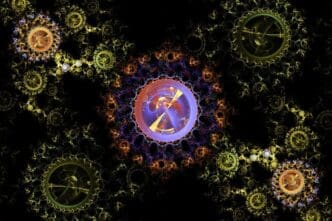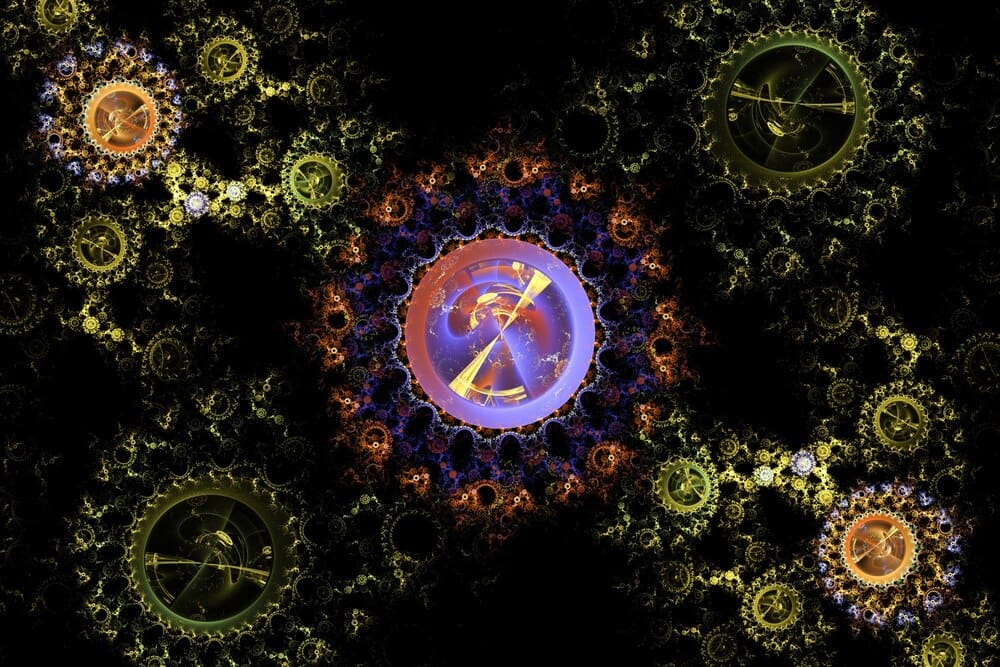Vedic Astrology, known in Sanskrit as Jyotisha or the “science of light,” is an ancient system of divination originating in India, with its roots deeply embedded in the sacred Hindu texts, the Vedas. This profound discipline was revealed to ancient sages, or Rishis, who perceived the cosmos as an intelligent, interconnected web where planetary movements directly influence human destiny. Its history spans millennia, evolving from a divine oral tradition passed from guru to disciple, to being codified in foundational texts like the Brihat Parashara Hora Shastra, and finally to its modern-day global resurgence as a sophisticated tool for understanding karma, life purpose, and the timing of life events.
Unlike Western astrology, which is primarily solar-based, Jyotisha is a lunar-based system that utilizes the sidereal zodiac, which aligns with the fixed constellations. This makes it astronomically more precise over long periods. The core purpose of Vedic Astrology is not simply to predict the future, but to illuminate the karmic patterns an individual is born with, providing a roadmap to navigate life’s challenges and opportunities with greater wisdom and self-awareness.
The Divine Origins: The Vedas and the Rishis
The origins of Vedic Astrology are considered divine, not man-made. It is one of the six Vedangas, or limbs of the Vedas, which are auxiliary disciplines designed to support the understanding and application of the primary Vedic scriptures. This places Jyotisha on par with other essential fields like phonetics (Shiksha), grammar (Vyakarana), and ritual (Kalpa).
This sacred knowledge was not invented but “seen” or cognized by enlightened Rishis during states of profound meditation. These seers understood the planets, or Grahas, not as mere physical objects but as cosmic agents of karma, divine intelligences that deliver the results of our past actions at the appropriate time. The lineage of this knowledge is traced back to great sages like Parashara, Jaimini, Bhrigu, and Garga, who are revered as the founding fathers of the tradition.
From Oral Tradition to Sacred Texts
For centuries, the intricate knowledge of Jyotisha was preserved through a rigorous oral tradition known as the Guru-Shishya parampara (the lineage of teacher and student). Masters would transmit the complex rules, mathematical formulas, and interpretive nuances directly to their dedicated disciples. This method ensured the purity of the knowledge, as it relied on perfect memorization and deep comprehension.
Eventually, this vast body of wisdom was transcribed into written form, creating the foundational scriptures (Shastras) that astrologers still study today. This transition from oral to written form was a pivotal moment, allowing the knowledge to be preserved and disseminated more widely across generations.
Key Foundational Texts
Several classical texts form the bedrock of modern Vedic astrological practice. They are not seen as competing works but as different facets of the same divine science.
Brihat Parashara Hora Shastra (BPHS)
Attributed to Sage Parashara, the BPHS is arguably the most important and comprehensive text in Vedic Astrology. It is a detailed dialogue between the sage and his disciple, Maitreya. This encyclopedic work covers the fundamentals, including the nature of the planets, signs, and houses (bhavas), the complex system of divisional charts (vargas) for micro-analysis, and the all-important Dasha systems for timing life events, most notably the Vimshottari Dasha.
Jaimini Sutras
Authored by Sage Jaimini, a disciple of the great Vyasa, this text presents a unique and highly sophisticated system of astrological interpretation. While sharing the same core principles as the Parashari system, Jaimini astrology uses different techniques, such as Chara Dashas (sign-based timing periods), Karakas (planetary significators based on their degree), and Arudha Padas (calculated points representing the manifestation of a house’s energy). It is often used in conjunction with the Parashari system for deeper insights.
Bhrigu Samhita
The Bhrigu Samhita is a legendary and somewhat mythical work attributed to Sage Bhrigu. The legend states that Bhrigu was granted the ability to write the horoscope for every soul ever to be born. It is believed to be a vast collection of palm leaves containing millions of horoscopes, where an individual can find their specific chart and a detailed account of their past, present, and future lives. While locating an authentic original is rare, the Bhrigu Samhita stands as a powerful symbol of Jyotisha’s incredible predictive potential.
The Evolution and Influence Through Eras
Like any living tradition, Vedic Astrology did not remain static. It evolved and absorbed influences over time while retaining its unique spiritual and philosophical core. The system’s history is marked by periods of patronage, synthesis, and sometimes, suppression.
The Hellenistic Connection
Following the campaigns of Alexander the Great in the 4th century BCE, there was significant cultural exchange between India and the Greco-Roman world. This led to a period of synthesis where some Hellenistic astrological concepts were integrated into the Indian tradition. The text known as the Yavanajataka (“Astrology of the Greeks”) is a prime example of this cross-pollination. While concepts like the 12 zodiac signs and some house interpretations show this influence, the foundational pillars of Jyotisha—the Nakshatras (lunar mansions), the Dasha systems, and the underlying philosophy of karma—remain distinctly Vedic.
The Mughal and British Periods
During the Mughal Empire, astrology often enjoyed royal patronage, with many emperors employing court astrologers for guidance on personal and state matters. However, the tradition faced a significant challenge during the British Raj. The colonial administration promoted Western science and education, often dismissing traditional Indian knowledge systems like Jyotisha as mere superstition. This led to a decline in its public prominence, but the science was diligently preserved within families of hereditary astrologers (Jyotishis) and in spiritual centers.
The 20th Century Revival and Global Spread
The 20th century witnessed a remarkable renaissance of Vedic Astrology, fueled by the efforts of brilliant scholars who worked to restore its dignity and make it accessible to a modern audience. This revival laid the groundwork for its current global popularity.
Pioneers of the Modern Era
Two figures stand out for their monumental contributions. Dr. B.V. Raman (1912-1998) is widely regarded as the father of modern Vedic Astrology. Through his prolific writing, English translations of classical texts, and the founding of “The Astrological Magazine,” he single-handedly brought Jyotisha to the English-speaking world. He presented it as a rational, scientific discipline, bridging the gap between ancient wisdom and the modern mind.
Following in his footsteps, K.N. Rao (born 1931) championed a research-based, statistical approach to astrology. By establishing the world’s largest school of astrology at the Bharatiya Vidya Bhavan in New Delhi, he has trained thousands of students, emphasizing ethical practice, rigorous technique, and the validation of astrological principles through repeatable research.
The Digital Age and Western Adoption
The advent of the internet and sophisticated astrology software revolutionized the practice. Complex and time-consuming calculations that once took hours could now be done in seconds. This democratization of the technical side of Jyotisha allowed more people to focus on the art of interpretation. Today, Vedic Astrology is flourishing in the West, embraced by those in the yoga, wellness, and mindfulness communities who are seeking a deeper, soul-centric understanding of their lives that goes beyond the purely material.
Core Principles That Have Endured
Throughout its long and storied history, the core philosophical tenets of Vedic Astrology have remained unshaken. These principles are what give the system its profound depth and enduring relevance.
- Karma and Reincarnation: The birth chart is a map of our prarabdha karma—the portion of our past-life karma that is ripe to be experienced in this lifetime.
- The Grahas: The nine “planets” (including the Sun, Moon, and the lunar nodes Rahu and Ketu) are seen as divine agents that orchestrate the unfolding of this karma.
- The Nakshatras: The 27 lunar mansions are a unique and ancient layer of the zodiac that provides deep psychological and spiritual insights into the Moon’s position, which represents the mind and consciousness.
- Dasha Systems: These unique planetary timing systems, especially the 120-year Vimshottari Dasha, are the key to Vedic Astrology’s predictive power, showing which planetary energies will be most active during specific periods of life.
In conclusion, the history of Vedic Astrology is a journey from divine revelation to digital application. It has traveled from the meditative minds of ancient Rishis in India, through centuries of oral and written transmission, survived periods of cultural suppression, and has now emerged as a respected global discipline. Its enduring purpose remains the same as it was thousands of years ago: to be a “science of light,” illuminating our karmic path and empowering us to live with greater purpose, wisdom, and alignment with the cosmos.








